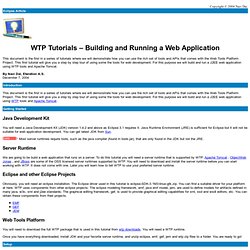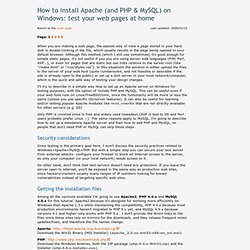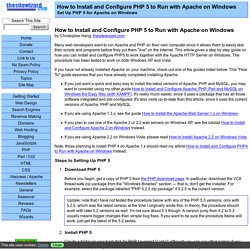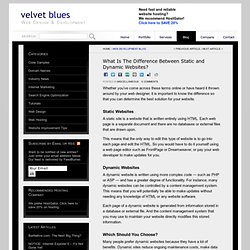

How To Create a Pure CSS Dropdown Menu. With the help of some advanced selectors a dropdown menu can be easily created with CSS.

Throw in some fancy CSS3 properties and you can create a design that was once only achievable with background images and Javascript. Follow this tutorial to see the step by step process of building your own pure CSS dropdown menu. The menu we will be creating features two sub categories that appear once the parent link is activated by a hover. The first series of sub-links appear underneath main nav bar, then the second series of links fly out horizontally from the first dropdown. Take a look at the CSS dropdown menu demo to see it all in action. View the pure CSS dropdown menu demo <nav><ul><li><a href="#">Home</a></li><li><a href="#">Tutorials</a></li><li><a href="#">Articles</a></li><li><a href="#">Inspiration</a></li></ul></nav> First up we’ll need to create the HTML structure for our CSS menu.
The secondary sub-menu is nested under the “Web Design” option of the first sub-menu. Brackets. Web Tools Platform. Copyright © 2004 Naci Dai.

This document is the first in a series of tutorials where we will demonstrate how you can use the rich set of tools and APIs that comes with the Web Tools Platform Project. This first tutorial will give you a step by step tour of using some the tools for web development. For this purpose we will build and run a J2EE web application using WTP tools and Apache Tomcat. By Naci Dai, Eteration A.S.December 7, 2004 This document is the first in a series of tutorials where we will demonstrate how you can use the rich set of tools and APIs that comes with the Web Tools Platform Project. Java Development Kit You will need a Java Development Kit (JDK) version 1.4.2 and above as Eclipse 3.1 requires it. Most server runtimes require tools, such as the java compiler (found in tools.jar), that are only found in the JDK but not the JRE.
How to install Apache (and PHP+MySQL) on Windows: test your web pages at home - Web design tips & tricks. Last updated: 2006/01/15 Return to the main page Page: 1 2345 When you are making a web page, the easiest way of view a page stored in your hard disk is double-clicking in the file, which usually results in the page being opened in your default browser.

Although this method (which I still use sometimes) it's good enough for simple static pages, it's not useful if you you are using server side languages (PHP, Perl, ASP...), or even for pages that are static but use links relative to the server root (like "/index.html" or "/css/styles.css"). In this situations the solution is either upload the files to the server of your web host (quite cumbersome, and not feasible or desirable if the site is already open to the public) or set up a test server in your local network/computer, which is the quick and safe way of testing your design changes. I'll try to describe in a simple way how to set up an Apache server on Windows for testing purposes, with the option of include PHP and MySQL. How to Install and Configure PHP 5 to Run with Apache on Windows. Set Up PHP 5 for Apache on Windows by Christopher Heng, thesitewizard.com Many web developers want to run Apache and PHP on their own computer since it allows them to easily test their scripts and programs before they put them "live" on the Internet.

What Is The Difference Between Static and Dynamic Websites? Whether you’ve come across these terms online or have heard it thrown around by your web designer, it is important to know the difference so that you can determine the best solution for your website.

Static Websites A static site is a website that is written entirely using HTML. Each web page is a separate document and there are no databases or external files that are drawn upon. This means that the only way to edit this type of website is to go into each page and edit the HTML. So you would have to do it yourself using a web page editor such as FrontPage or Dreamweaver, or pay your web developer to make updates for you. Dynamic Websites A dynamic website is written using more complex code — such as PHP or ASP — and has a greater degree of functionality. Each page of a dynamic website is generated from information stored in a database or external file. Which Should You Choose? Many people prefer dynamic websites because they have a lot of benefits.
Tags: content management system, databases.